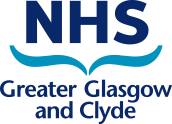Hyponatraemia – investigation and management in hospital
The GGC hyponatraemia management guidelines in the Adult Therapeutics Handbook have been updated.
Key messages:
- Severe symptomatic hyponatraemia is a medical emergency. Discussion with a senior physician (consultant or senior specialist trainee) is critical in all cases prior to embarking on treatment
- Peripheral administration of 1.8% sodium chloride through secure access in a large vein is safe, if central vein access not already in place. Do not delay treatment
- Rate of change is critical. Aim is to increase serum sodium by 4-6mmol/L in the first 0-4 hours BUT not exceeding 8-10mmol over the first 24 hours. Overcorrection of hyponatraemia must be actively managed with senior/clinical biochemistry/endocrinology input to reduce risk of osmotic demyelination syndrome (ODS)
Mild hyponatraemia is defined as a sodium level between 130-133mmol/L and moderate hyponatraemia between 125-129mmol/L. Recognising that mild hyponatraemia is very common and transient in the inpatient population, the new threshold for the investigation of hyponatraemia was reduced from <133 down to <130mmol/L. Suggested investigations are listed in flowchart 1 of the guideline click here.
Profound hyponatraemia is defined as a sodium level <125mmol/L. Patients are more likely to develop symptoms which require urgent treatment. Recent changes to the management are:
- Use of a symptom based approach
The updated guideline was designed to improve recognition and support appropriate, timely action in severe hyponatraemia. In many circumstances, it can be difficult or time-consuming to establish how quickly hyponatraemia has developed, and a symptom based approach (typically in the context of profound biochemical hyponatraemia) is increasingly recommended in international guidelines.1,2 - Administration of electrolyte replacement via secure access in a large peripheral vein, if central vein access is not already established.
Delays that are inevitable in establishing central access for patients with severe symptoms of hyponatraemia are undesirable in this time-critical condition.
Secure access is defined as a cannula that is flushing well with no signs of extravasation. - Bolus administration of hypertonic sodium chloride.
Hypertonic sodium chloride refers to concentrations higher than 0.9%w/v. Use of 170ml boluses of 1.8% sodium chloride over 20 minutes is recommended for the correction of hyponatraemia with severe symptoms. This is roughly the same amount of total sodium in a bolus as that recommended in reference 1, but of lower concentration.
This approach is recommended as:
- This protocol is designed to be deliverable using secure peripheral venous access
- 1.8% sodium chloride is already widely available across GGC
More concentrated solutions are available where needed (e.g. in cases of significant hypervolaemia) in critical care settings.
References:
- Verbalis JG et al. Diagnosis, Evaluation, and Treatment of Hyponatraemia: Expert Panel Recommendations. Am J Med 2013, 126 (10) Suppl 1:S1-42.
- Spasovski G et al. Clinical Practice Guideline on Diagnosis and Treatment of Hyponatraemia. Eur J Endocrinology 2014, 170(3):G1-47
Published 10/11/2020. Medicines Update blogs are correct at the time of publication
